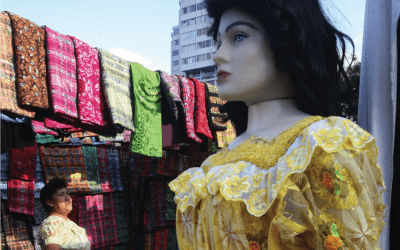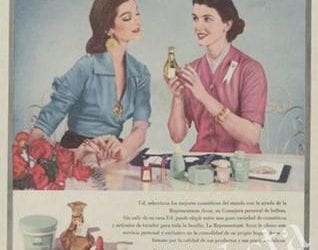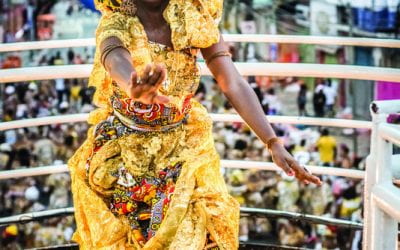Beauty Weighs in Argentina
When Looks Can Kill
Argentines believe that “success” comes from luck and not as much from hard work and efforts, according to a recent survey conducted by the University of Palermo. This may work to the disadvantage of some women when their social and economic status is determined in part by their looks. The obsessive emphasis on looks threatens the safety of women as well. Violence against women within Argentina is a growing epidemic, and this reality devastates women, often silencing them (BBC News 2015). The objectification of women is a factor in this barbaric reality that continues to worsen under the current administration, which is headed by a man who publicly confessed to cat-calling women. While mobilizations against femicide call for not one more life to be lost to this public health crisis, the line between beauty and sickness continues to blur. In fact, when a survey revealed that more than half of the women in Buenos Aires felt that the unsolicited verbal taunting made them feel unsafe on the streets, the former Mayor of Buenos Aires dismissed these concerns and went as far as to accuse these same women of “lying.” According to him and other men, women deep down believe that cat calls are the highest form of “flattery.”
Women are often convinced that their life chances and choices dwindle rapidly over time. They are constantly reminded in popular culture that men like their women like they like their cars, “a younger and newer model is always preferable.” Between the loud ticks of their biological clock and the wear and tears caused by life, there is an overwhelming anxiety to appear youthful and sexy (desirable.) This in part explains why the beauty industry appears to be recession proof because and despite Argentina’s economic decline. In Buenos Aires, the hottest commodity remains the appearance of youth, because it can lead to a wealth of opportunities and possibilities if you fit the (right) bill. In this context, to strategically invest in a woman’s most profitable attribute, “her body,” not only is time consuming but it is also beyond oppressive. It can suck the life right out of you.
The perils of aging are acculturated into young boys and girls as soon as they learn the popular children’s song, “Manuelita” by Argentine cultural icon Maria Elena Walsh. As the story goes, Manuelita left the Province of Argentina and went to Paris after she noticed her wrinkled reflection in a puddle. She fell in love with a turtle who was passing by and wondered what to do, since he reasonably could not return her love. She thought that she appeared too old (for him.) She pondered, “…in Europe and with patience,” she could be made beautiful (again.) At the Parisian drycleaners, Manuelita’s creases got ironed out, they gave her a wig, and put boots on her feet. However, because she longed to return to her beloved turtle and town of Pehuajo, en-route, while crossing the sea, she became wrinkled once more. Manuelita’s luck ran out. She could no longer defy age (time.)
The stress on youth and beauty reflects in advertisements that (still) read, “We solicit a waitress with good presence.” Yet, what amounts to “good presence” remains inextricable from the Eurocentric beauty ideals within Porteño culture. The further away you are from the Capital’s center, the more likely you are to feel disenfranchised by these standards along with the rituals which celebrate them. For example, in 2014, the legislature in the City of Chivilcoy located within the Provinces of Buenos Aires, adopted a resolution to ban beauty pageants from its municipal festivals. In an article by Simon Romero, the New York Times reported that since Argentina has some of the “world’s highest rates of eating disorders among women” and since it is obsessed with “unattainable ideals of perfection,” these spectacles promote unhealthy behaviors and attitudes (December 22, 2014). Due to the country’s “uncompromising” beauty expectations, the local legislature resolved within its statutes that, “Beauty is not something that can be objectified…Organizing a competitive scenario of this kind creates a discriminatory and violent situation” for women that reverberates throughout public and private life.
Beauty Pays: You Want Me Young
“There is nothing more beautiful than the beauty of women, right? It’s almost the reason that men breathe.”-Argentine President Mauricio Macri. quoted by Tara Brady, Daily Mail, 2014.
Seated at a café in the trendy neighborhood of Caballito, I overhead the manager say to the barista that he was not going to hire the lady who responded to the job ad on the door because she was too old. I called my husband to fret, “She could not have been older than I am.” I then decided to stop by my friend Sebastian’s salon to dye my hair blonde and do away with all traces of gray. This pressing urge to stall the inevitable was not only costly— it was work. I saw my neighbor pass by me while walking her dog, wearing a T-shirt that read “Forever21.” To some, this is merely a brand but to others, it is a life goal. In Argentina, it is (always) beauty before age.
Later in the day, I noticed a mural of Eva Peron. “Evita” embodied the beauty and luck most celebrated within Argentine culture. Her gambit from an aspiring actress from the Pampas could to the First Lady of Argentina was impressive. Evita accomplished this feat by appealing to traditional (patriarchal) values.While most Argentines (especially those of the working class) can speak of her accomplishments and list what she achieved for women’s rights, it is her blonde bun and youthful smile that the world remembers.
Evita’s face has become as iconic as that of the face of the revolutionary Che Guevara; and accordingly, both are displayed on buildings and printed on T-shirts, flags, and underwear alike. Due to her untimely death, Evita remains, “forever young” within the public imaginary. Her husband Juan Domingo Person had her body embalmed so that she could appear as if she were a sleeping (beauty.) Fellow populist Cristina Fernández de Kirchner often evoked Evita stating that she laid the conditions that made her presidency possible. Beauty can even turn a privileged Porteña into a European Queen, as when Máxima Zorreguita Cerruti, an Argentine, became Queen Maxima of the Netherlands. My friend Lena tells her daughter, “Why dream of being a princess, when you can really become a Queen?”
In 2014, the Atlantic ran a story about beauty standards entitled, “What Beauty Looks Like, from Argentina to Vietnam.” In it, Megan Garber shares the story of Esther Honig who sent graphic designers from around the world an untouched photo of herself. She requested that they, “make me look beautiful.” Using Photoshop, they adapted her appearance in accordance to the local standards of beauty. In Argentina, the culture’s preference for magnificently polished women was put into focus; Honig resembled a mannequin.
One night, as we ate sandwiches around the table with my family, my mother-in-law asked her niece to tell me about much weight she lost since the last time I saw her. In that moment, I lost my appetite because there is nothing more unsavory than reaching for seconds as someone praises weight loss over your shoulder. I also knew that she had dropped out of school and instead put breast implants on layaway. Whenever she drank one too many, she would grab her breasts and exclaimed, “Cristina [Kirchner] got me these.” Indeed, Argentina had programs that subsidized plastic surgery and mental health. I tried my best to look intrigued but I realized, it would take another glass of wine.
Beauty Hurts: You Want Me Dead
Sonia Pérez died after injecting Vaseline into her chest attempting a do-it-yourself breast augmentation. The headline “self-obsessed Argentine” flashed onto the screen. The reporter also noted that Pérez had recently suffered third-degree burns while sunbathing. When my friend Sebastian commented that Pérez was sick, I retorted how “sick” could she be within the context of a culture that places an extraordinary high premium on aesthetics because of patriarchy, heteronormativity and neoliberal capitalism. She was a symptom. The sordid relationship among these social determinants engenders all types of pathologies and structural challenges for “feminine embodiment.”
I explained to Sebastian that Perez’s extreme measures to achieve breast augmentation was misguided but not completely outside of the scope of the countless extremes measures women can undertake to “fit into” the prevailing and painful cultural norms of what is thought to be beautiful. Sebastian’s conclusions started to upset me, “Women should care about how they look, that is what a good woman does.” He unapologetically reminded me, “Don’t think men don’t do the same to conform to society’s standards.” I rolled my eyes and he shot back at me, “Did you know that men in Argentina are now injecting Vaseline into their penises?”
In Missing Bodies: The Politics of Visibility (New York University Press, 2009), Lisa Jean Moore and Mary Kosut remind us that bodies need to conform to these impossible standards and ideals, because, “as citizens of larger social bodies (the communities and institutions our bodies populate), we are responsible for keeping our bodies functioning in the pursuit of national goals and economic agendas.”
Beauty Controls: You Disrupt Me
It usually takes me a few days to get acclimated whenever I return to Buenos Aires because the culture shock can be disorienting. For example, when someone calls you “gorda” (fat), it is a term of endearment. I cringe a little whenever I am greeted with it. “Negra” (black) can also be affectionate but insulting. “Flaca” (skinny) is just as ubiquitously used between friends. I thought, can what Argentina celebrates as beauty look, sound, and feel…ugly?
Sitting at the ice-cream parlor in front of our apartment, I saw a little girl sobbing. The juxtaposition of tears being wiped away while she licked her one scoop of ice cream was sobering and uncomfortably familiar. Her father told her that she could not have an extra scoop, while her brother was permitted to choose two flavors (scoops). Her mother consoled her and whispered loud enough for me to hear, “You cry now, but tomorrow when you cannot fit into what all the other girls in your class wear, you will cry even more.” The little girl exclaimed to her father, “This is not fair!” I looked over at my son and contemplated, how would he be treated if he were a girl?
Spring 2017, Volume XVI, Number 3
Melissa Maldonado-Salcedo is a medical anthropologist and recently completed her doctoral degree at the Graduate Center of the City of New York and also identifies as an artist, and activist. She currently teaches at New York University’s Tandon School of Engineering and lives on the Lower East Side with her husband and son (the Pablos.)
Related Articles
Beauty: Editor’s Letter
Is it a confession if someone confesses twice to the same thing? Yes, dear readers, here it comes. I hate chocolate. For years, Visiting Scholars, returning students, loving friends have been bringing me chocolate from Mexico, Colombia, Venezuela, Ecuador, Peru…
Globalizing Latin American Beauty
Beauty seems to matter a lot in Latin America. Whenever I arrive in the region I am struck by the disproportionate number of attractive and stylish women and men who seem to be just walking around. I am always even more taken aback by airport bookstalls crammed with…
Contesting Beauty
English + Español
In 2016, the official Miss Brazil beauty pageant competition witnessed an unprecedented moment, as six black Brazilian women from around the country advanced to…





